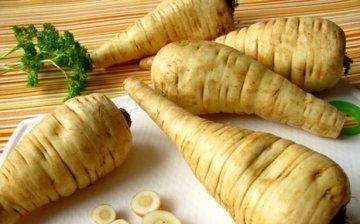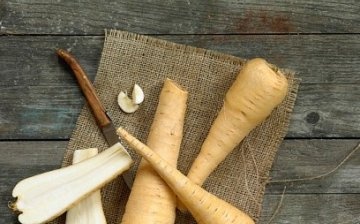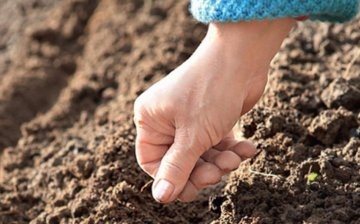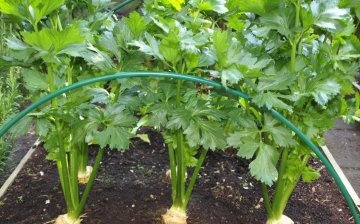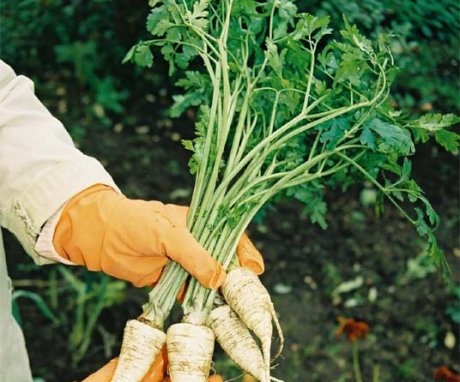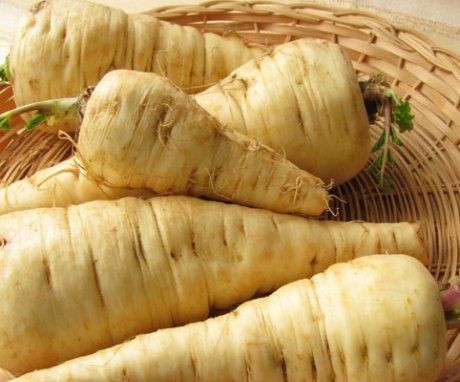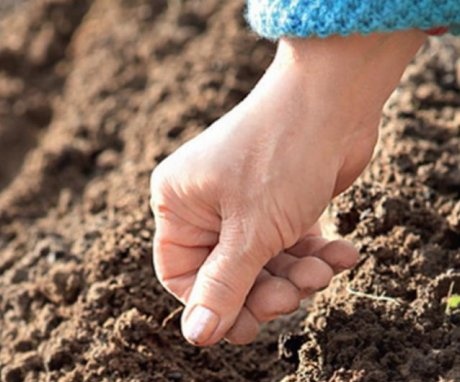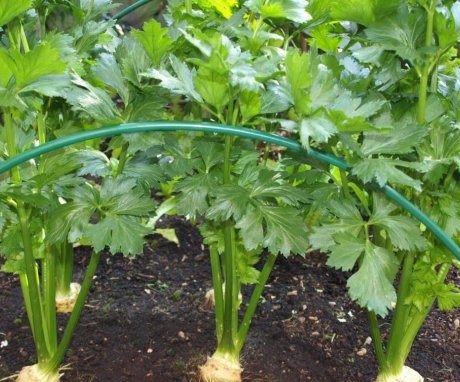The main beneficial properties of parsnip root
Parsnip grows wild in meadows and glades in Eurasia. Known since the Neolithic, which is confirmed by excavations in Switzerland. By the 17th century, it spread throughout Europe. The cultivated parsnip differs from the wild one with its smooth stem and a significantly larger root crop. It is appreciated for its unique taste and beneficial properties.
Content:
- Parsnip: description
- Useful properties and contraindications for use
- The use of parsnips in traditional medicine
- Planting parsnips
- Care and storage of parsnips
Parsnip: description
Parsnip is a gingerbread vegetable. He lives for two years. For the first year, a rosette of pinnate leaves on long roots and a root crop appear. The next year, a ribbed stem up to 2 m high grows. Umbrellas of green flowers form on it, from which seeds are formed. Fruits of a flattened brown color, when dried, break into two, each of which contains a seed. They ripen in August-September. The root crop becomes inedible in the second year. By the fall, the plant dies.
Parsnip root vegetable is thick, fusiform, similar to carrots, but much larger, with additional roots at the bottom.
White colour. The weight of the parsnip root in some cases reaches 1 kg. It also tastes like carrot, a little sweet, but with an original mild aftertaste and pleasant aroma with hints celery.
Translated from Latin, the name "parsnip" means "food". Popular names "field borsch", "goat", "deer root", "white carrot" indicate the use of the vegetable in the past and its appearance. Parsnips were used as food until the time when they were replaced by potatoes. Then it was undeservedly forgotten, and only in recent decades has it begun to return to our diet.
Varieties:
- "Student"
- "Guernsey" with high frost resistance ("Biotekhnika")
- "Culinary" from the firm "Gavrish"
- "Russian size" from the NK-Russian vegetable garden.
Useful properties and contraindications for use
Parsnip root is much healthier than other vegetables. It is used to prepare aromatic and delicious dishes. The root vegetable is stewed, mainly with other vegetables (carrots, onions). Add to soups, minced meat, caviar. Prepare salads with other vegetables. Its essential oils improve the taste of the prepared dishes.
It contains almost all useful chemical elements and mineral salts, carotene, vitamins A, B1 and B6, C, PP.
In terms of the amount of carbohydrates that are easy to digest, parsnip root is significantly ahead of other vegetables. These beneficial substances contribute to the treatment and prevention of many diseases. Parsnip preparations:
- Improves metabolic processes in the body.
- Relieve spasms, relieve pain.
- Strengthens the walls of blood vessels.
- Help in the treatment of neuroses.
- Medicines made from the stem and leaves help treat psoriasis and vitiligo.
There is information that parsnip leaves can be harmful to delicate skin. This is especially true for light-skinned people. Burns are not as severe as those from cow parsnip, but they heal for a long time and leave a mark on the skin. This is facilitated by the essential oils found in parsnip leaves.A contraindication for parsnip treatment can be photodermatosis. People with sensitive hands should wear closed clothing and gloves in the garden to avoid burns.
The use of parsnips in traditional medicine
It is used not only in official medicine. It is used in folk medicine to treat almost all organs:
- Relieves swelling, regulates the process of removing stones and sand.
- Helps in the treatment of stomach, including flatulence.
- Root infusion is used for pain in the heart.
- Helps in kidney treatment.
- Promotes the discharge of sputum in inflammatory diseases of the upper respiratory tract.
- In oncology, parsnips are used to increase hemoglobin levels.
- Parsnip seeds are used to prepare a tonic drink that relieves fatigue.
- Parsnips are useful for treating diseases of the pancreas, including diabetes.
- It increases appetite, relieves stress.
- Improves potency, cures female diseases.
- Leaves are advised to be consumed by patients with gout. With increased acidity, parsnips "acidify" the body. It is used by lovers of protein diets, consuming 100 g of leaves per day.
- A decoction of the leaves is used to thin phlegm for bronchitis and pneumonia (as an additional remedy).
- Root vegetables are finely grated and used to treat inflammatory skin diseases and acne. The bactericidal properties of parsnips help to eliminate bad breath.
- Parsnip juice is drunk to restore muscle work.
- The presence of potassium in parsnip juice makes it possible to use it in the treatment of the nervous system, mental fatigue.
Planting parsnips
Parsnip is a light-loving plant. It is undemanding to the ground. It grows well in any soil, but the best results can be obtained on fertile loamy soils or sandy loam. You should not sow parsnips in the area where fresh manure was introduced this year. You have to wait for him to overheat. Otherwise, the roots will branch too much. Sowing seeds can be done very early. They begin to germinate at temperatures from 3 degrees Celsius, withstand frost. Sowing early will help provide the right amount of moisture in the soil.
Parsnips easily tolerate drought, but grows best in moist soil.
Dislikes stagnant water. During drought, the root becomes thin and long, making its way into the depths in search of moisture. Parsnips are propagated by seeds. But their germination is weak, lasts up to two years. To improve it, the seeds are prepared by keeping them in a biostimulant solution for two days. Then washed and dried. Can germinate seeds 2 weeks before sowing. They are kept in water for 24 hours, changing the water after 2 hours. Then covered with a cotton cloth and placed in a warm place. Make sure that they do not dry out. After 2 weeks, the seeds begin to germinate. They are placed in the cold for several hours.
You can mix the moistened seeds with wet sand, cover with gauze and leave to germinate. Some gardeners mix seeds carrots and parsnips and sow them together. Carrot shoots appear much earlier than parsnips. Therefore, the rows are marked, the aisles can be weeded out so that they do not overgrow with weeds. Parsnips are sown to a depth of 2 cm. Between rows 30-40 cm. The soil is rolled so that it does not dry out longer. This will increase the number of seedlings.
Care and storage of parsnips
Seeds germinate for about 20 days. In the phase of 2 true leaves, the seedlings are thinned at a distance of 5 cm, and in the phase of 7 leaves - by 10 cm.When planting together with carrots, adjust the crops at your discretion, leaving more parsnips or carrots.
Care Tips:
- After thinning, they are fed with liquid nitrogen fertilizers. During the season, 3 more dressings are carried out using fertilizerscontaining potassium and phosphorus.
- The soil in the aisles and around the plants is regularly loosened, removed weeds.
- Water as needed abundantly, but infrequently.
- Parsnips are not treated against pests because they have no pests. This is another plus in growing this healthy and tasty vegetable.
- In order to get seeds, you need to leave the root under the snow for the winter or plant it in the spring. The seeds obtained usually have good germination and give the opportunity to get a good harvest of parsnips.
Parsnips are harvested late, before the onset of frost. Root crops with a whole skin are laid for storage. If autumn is rainy, dirt is cleaned from the fruits. But usually they try to remove it in dry weather. Leaves are cut, roots are dried in the fresh air.
Store parsnips in dry, cool, dark rooms at a temperature slightly above zero. If the humidity in the room is high, the roots are covered with sand. Some of the parsnip roots can also be stored in the garden beds. To do this, cut the leaves and lightly sprinkle with earth. You need to dig it in the spring before the root crops germinate.
More information can be found in the video:



